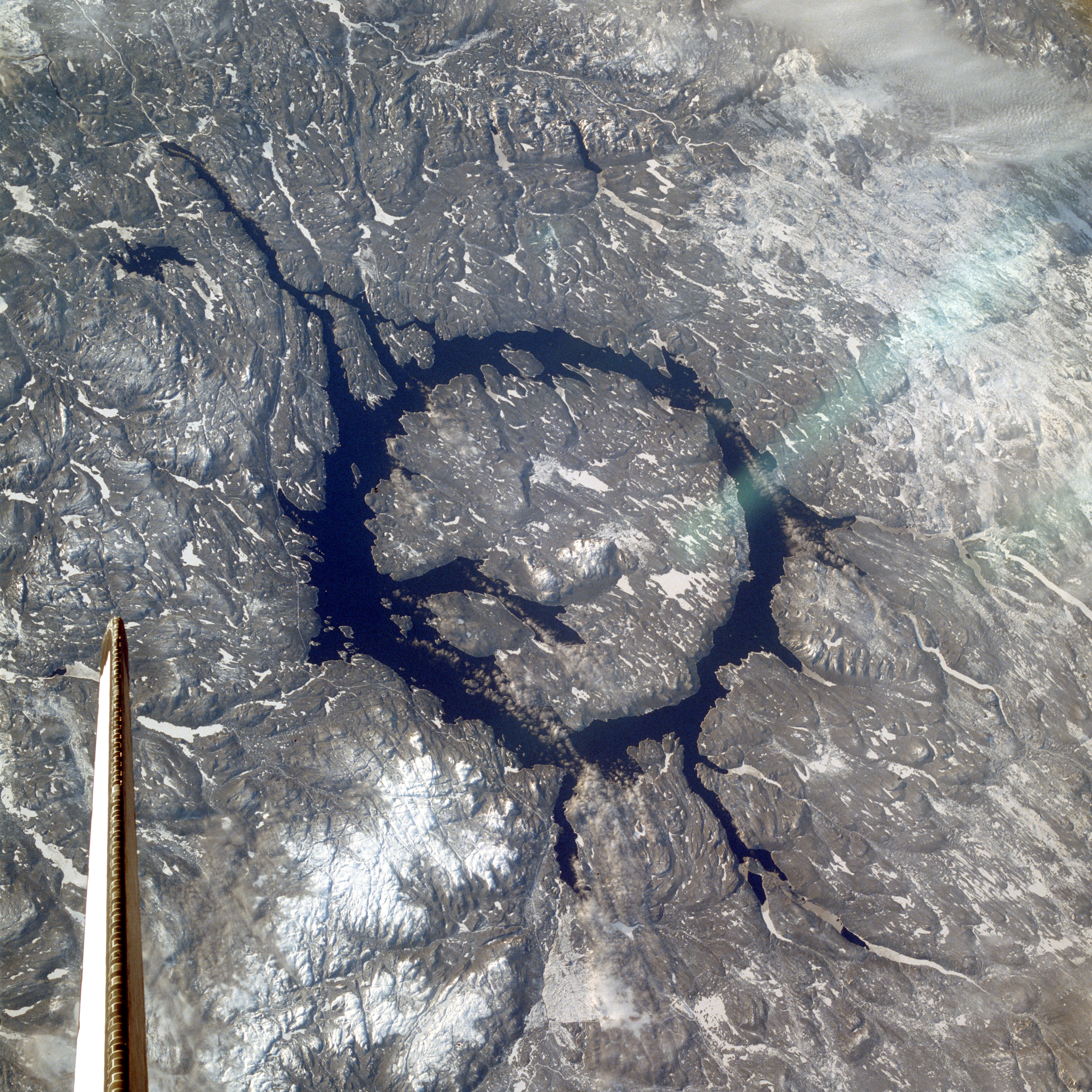
Caption: The Manicouagan crater as imaged by Space Shuttle mission STS-9 (launch 1983 Nov28) using Space Shuttle Columbia.
Features:
- There is snow since this is a
winter.
It may be true colors,
but it looks a little overly grey.
The view is oblique and to the west.
- The Manicouagan crater
is in Quebec,
Canada, ∼ 200 km north of
Baie-Comeau,
Quebec---i.e., the middle of nowhere.
The area of the Manicouagan crater is rugged and heavily timbered and is in the Canadian Shield.
- The Manicouagan crater
is multi-ring crater
of ∼ 100 km in diameter.
The visible part is ∼ 72 km in diameter (see Wikipedia: Manicouagan Reservoir: Manicouagan impact crater).
The Manicouagan crater is the 6th largest confirmed impact crater on Earth.
- The Manicouagan crater is one of the
more obvious Earth
impact crater.
For most impact craters, you'd need
some authority to tell you they were there.
- The annular lake seen in the image is
Manicouagan Reservoir
which has a diameter.
of ∼ 70 km and may be a depression between two rings of
the multi-ring crater,
but Wikipedia is NOT saying.
The island formed by Manicouagan Reservoir is Rene-Levasseur Island.
Manicouagan Reservoir is drained at the south end by Manicouagan River which flows south ∼ 200 km and empties into the Saint Lawrence River not far from it becomes the Gulf of Saint Lawrence.
- The crater is 214(1) Myr old
(thus formed in the
Triassic (252.2(5)--201.3(2) Myr BP).
The impactor is believed to be an asteroid of ∼ 5 km in size scale.
- Mount Babel
(peak 952 m above sea level)
is believed to be the
central peak
of the crater
which is also then a
central-peak crater.
- The crater
has been heavily eroded particularly by
glaciers
during the
Quaternary glaciation (AKA the current ice age).
Image link: Wikipedia: File:STS009 Manicouagan.jpg.
Local file: local link: crater_manicouagan.html.
File: Earth geology file: crater_manicouagan.html.